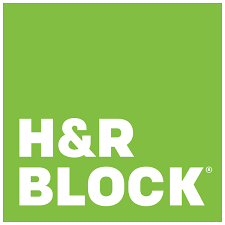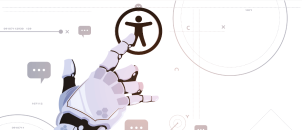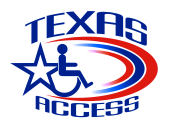As the world increasingly becomes digital in everyday life, whether due to improvements in technology or the coronavirus pandemic, the concept of digital inclusion and web accessibility is a growing concern for many individuals and businesses. About 15% of the world population and more than 20% of that of the American population currently live with a form of disability. Thankfully, like in America, many countries have now ratified their non-discrimination and digital accessibility laws to include the Web Content Accessibility Guidelines (WCAG) as a standard to follow in making websites and applications accessible to people with disabilities. Most international web accessibility laws now demand websites and applications are perceivable, operable, understandable, and robust enough to work for people with disabilities.
🏆 Check out our detailed examples of ADA-compliant websites
The Americans with Disabilities Act (ADA) and Section 508 have continuously referenced the WCAG 2.0 AA standard over the years. Non-conformance with WCAG standards is similar to not providing equal access to disabled users of your website which then triggered web accessibility lawsuits against such businesses. It is, unfortunately, true that the threat of a lawsuit has been a major reason many organizations make the effort to make their websites accessible. Many disabled users and advocates have championed this course over the years leading to high-profile web accessibility lawsuits. Here are the largest prominent cases we hope businesses (large and small) can learn from.
Web Accessibility Lawsuits Trend
In the United States, ADA-based website and app lawsuits jumped from 814 in 2017 to 2,258 in 2018, a 177% increase. The numbers roughly held steady in 2019 with the majority of cases relating to claims that websites are not keyboard accessible, hence do not work with screen reader software, and lack captioning for videos on websites. According to the lawsuit trend in 2020, the web accessibility lawsuits don’t look like they’ll slow down either. Meanwhile, ADA website lawsuit cases include small and large businesses as well as span every industry. They also feature some of the most well-known brands worldwide. So what are the largest web accessibility lawsuits as we prepare for what’s to come in 2021?
$6 Million National Federation of the Blind v. Target Corporation

This case will forever serve as a precedent for web accessibility cases and a cautionary tale to industries that do not meet web accessibility standards. The National Federation of the Blind (NFB), a US non-profit organization representing blind individuals notified Target Corporation in 2005 of their website’s inaccessibility to the blind and filed a lawsuit in 2006.
The lawsuit alleged Target of violating the California Unruh Civil Rights Act (California Civil Code Section 51 et. seq.), California Disabled Persons Act (California Civil Code Section 54 et. seq.), and The Americans with Disabilities Act (ADA)- accessibility laws that require businesses and any space to be accessible to everyone, including people with disabilities.
Target eventually settled the class-action lawsuit in 2018 and was required to pay damages of $6 million as well as make its website accessible to people with disabilities. Target also agreed to monitor its site’s accessibility by the National Federation of the Blind for three years and train its web developers team.
$1,575,000 National Association of the Deaf v. Harvard

One of the high-profile cases in web accessibility happened In 2015 when the National Association of the Deaf (NAD) filed a federal class-action lawsuit against the Massachusetts Institute of Technology (MIT) and Harvard University before the United States District Court for the District of Massachusetts. The association alleged Harvard and MIT of violating U.S. accessibility laws (the Americans with Disabilities Act and Section 508) by not providing appropriately accurate and comprehensive captioning for online course materials (video and audio files). This simply denies people who are deaf and hard of hearing equal access to free online programming.
A firm ruling from the courts ensures that university-sponsored online content is made accessible to people with disabilities moving forward. The NAD v. Harvard and NAD v. MIT lawsuits were each settled through consent decrees in February 2020. Here though, Harvard also was liable for the Class Counsel’s motion for $1,575,000 in attorneys’ costs and fees.
$755,000 National Association of the Deaf v. Netflix

In one of the first ADA website compliance lawsuits that established that accessibility should include online properties just as physical businesses, the National Association for the Deaf (NAD) filed a lawsuit against the online television and movie streaming giant Netflix in Massachusetts in 2012. This was to exempt customers with hearing impairments or deafness from their online services.
Massachusetts’ presiding judge ruled in favor of NAD, stating existing online services were not exempt from ADA requirements. This changed the way Netflix operates ever since. A host of other businesses also align their operation policies around this rule. NAD and Netflix reached a settlement agreement that would have Netflix provide closed captions to all of their online streaming content within a two-year period. Netflix also had to pay $755,000 in attorney fees and costs.
Juan Carlos Gil vs. chain Winn-Dixie Gil v. Winn-Dixie

Juan Carlos, a visually impaired individual brought an action under Title III of the Americans with Disabilities Act of 1990 against Winn-Dixie Stores, Inc. (“Winn-Dixie”) in 2017. The Courts consider the website is a “place of public accommodation” under the ADA and found Winn-Dixie to have violated Plaintiff’s rights since he couldn’t access the website using their screen reading software.
Winn-Dixie had to make its website compliant with WCAG 2.0 AA standards and set aside $250,000. Courts also require Winn-Dixie to ensure annual training for their employees on website accessibility, require third-party content on the site to be accessible, and adopt a web accessibility policy.
$100,000 National Federation of the Blind (NFB) vs. HRB Digital LLC and HRB Tax Group, Inc.

Here, NFB alleges that global tax preparation company- H&R Block discriminates against individuals with disabilities in the full and equal enjoyment of its goods and services provided through its website. The NFB on behalf of two individuals filed an ADA website lawsuit in a federal district court in Massachusetts, claiming H&R Block’s website and mobile applications are not accessible to people with disabilities, thereby violating Title III of the ADA and its implementation regulation.
This 2014 case represents the first where the Department of Justice (DOJ) intervened in accessibility regarding mobile apps and web pages. H&R Block entered into a consent decree with the DOJ and the plaintiffs which demanded it pay $100,000 in damages and make the website and apps accessible by following WCAG 2.0 AA before the 2015 tax season. H&R Block was also made to appoint a web accessibility coordinator and offer web accessibility training to employees.
Takeaways from ADA Website Compliance Lawsuits & Settlements
ADA website lawsuits have spanned many industries, from retail to food service to entertainment to education, and to tech. Among the other high-profile, web accessibility lawsuits are cases like Robles v. Domino’s Pizza LLC (ongoing), Mendizabal vs Nike Inc., Conner v. Parkwood (Beyonce Case), and Market vs. Five Guys Enterprises (2017) where U.S. District Court in New York denied Five Guys’ motion to dismiss. There is also the Rizzi v Morgan Stanley case where Albert Rizzi, a blind man filed a lawsuit for $9 million in damages after he couldn’t access Morgan Stanley’s site with his assistive technology. The key theme here is websites are interpreted as a place for accommodation.
🏆 Check our our top 10 web accessibility solutions
Another common thing with these cases’ plaintiffs were visually impaired persons who couldn’t use their assistive technology e.g., screen reading software with the website. Hence, like creating a ramp as access to a store, it is essential to make your website accessible to people with disabilities and be ADA-compliant by following the Web Content Accessibility Guidelines (WCAG) 2.0/2.1 Level AA.
Most web accessibility lawsuit cases end with a settlement agreement between the two parties e.g Haynes v. Hooters, Braulio Thorne v. Rolex Watch, Bishop v. Amazon.com, Inc., and Aldworth v TD Ameritrade, Inc. which ended with TD Ameritrade agreeing to pay to remediate their website, pay Aldworth’s court costs and legal fees, as well as punitive damages. The agreement may or may not have a condition to pay a certain amount in damages, but in all cases, the defendant still has to ensure its website provides disabled access by a certain date.
Accessibility compliance with web accessibility standards will save the business or organization time, and money, and give a better public image while non-compliance may result in complications for the defendant such as a tainted reputation and customer loyalty. Apparently, the most logical way to deal with web accessibility and avoid lawsuits is to be proactive and start early by testing for errors, removing the errors, and continuously monitoring through periodic testing to ensure it stays accessible even after you’ve made updates or changes to the site.







